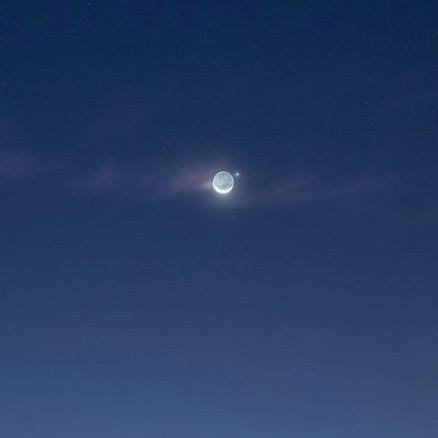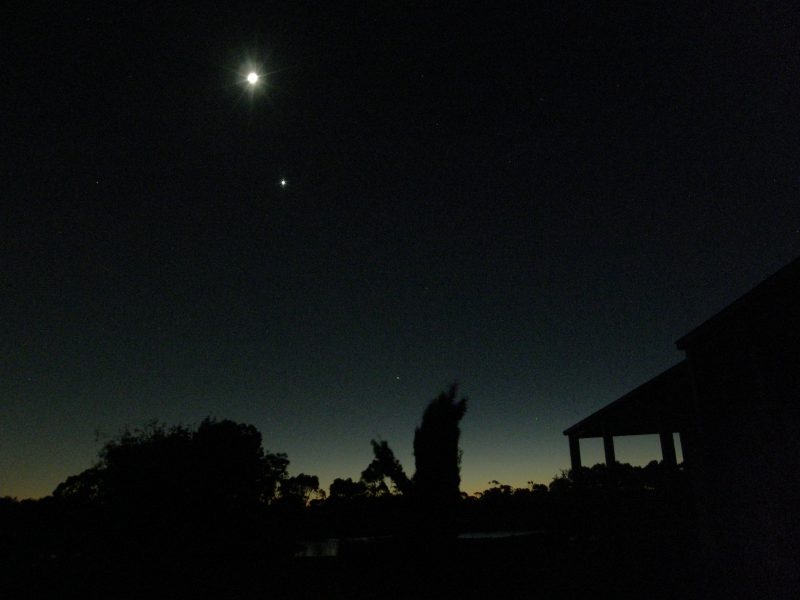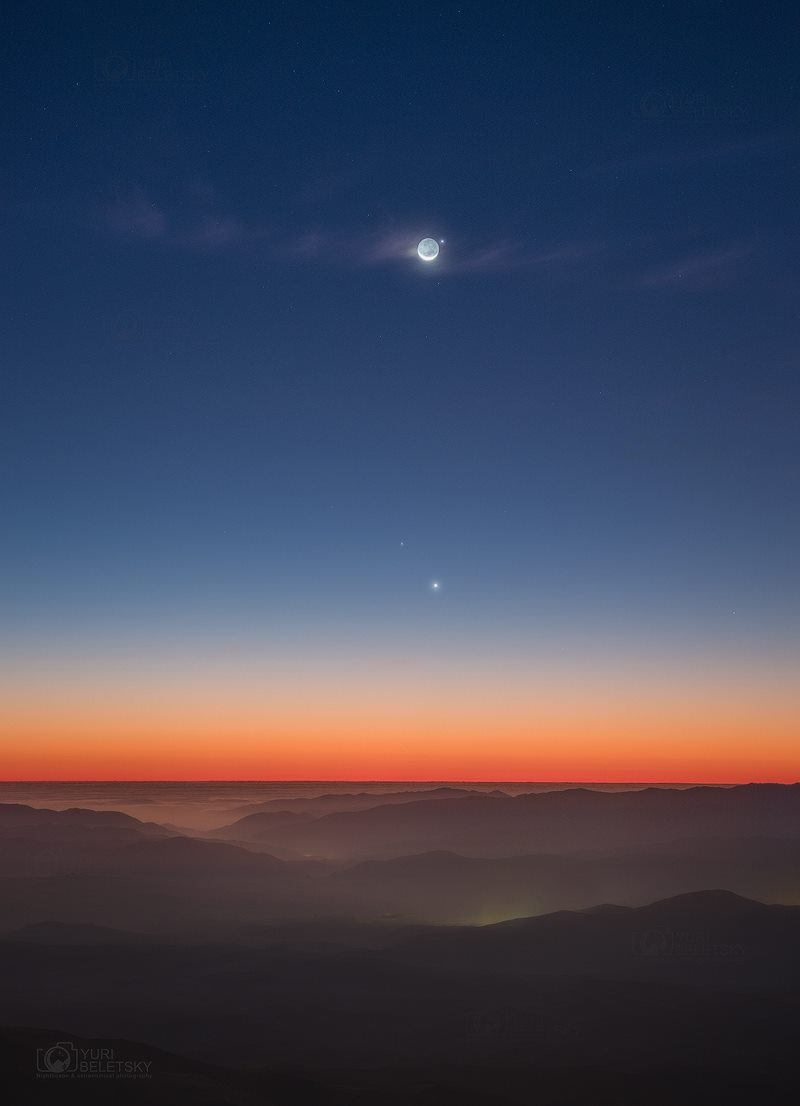
Before dawn on Tuesday, May 23, 2017, look very low in the east – very shortly before sunrise – for the extremely thin waning crescent moon and elusive planet Mercury. Will they be as close together as the 2016 photo of the moon and Mercury shown at the top of this post? No. The moon will sweep 1.6 degrees south of Mercury this month; that’s about three moon diameters. Still, if you manage to catch them, they will be beautiful in the dawn light.
If you look eastward before dawn, you’ll easily notice a bright object. That’ll be Venus, which is due to shine in our dawn sky for most of the rest of 2017. The moon has been shifting down in the east before dawn, sweeping past Venus and getting closer to Mercury, in the past few mornings:

So Mercury and the moon will be lower in the sky than Venus on the morning of May 23. Mercury is fainter than Venus, but still pretty bright for being so low in the sky, and so near the sunrise.
However, Mercury is much tougher to see from Earth’s Northern Hemisphere now than it is from Earth’s Southern Hemisphere. The farther south you are on Earth’s globe, the bigger advantage you have in seeing the moon and Mercury on May 23. That’s because these two worlds will rise earlier with respect to the sunrise, from the more southerly latitudes. Read more about the northern versus southern view of Venus and Mercury at our sky post from yesterday.

Mercury is the innermost planet in our solar system and always stays near the sun in our sky. So it shifts between the morning and evening skies; it’s been up before dawn throughout May 2017, but again the Southern Hemisphere has had the better view. Have you seen Mercury this month? If so, tell us in the comments below!
Now about that image of Mercury at the top of this post. It’s a crop from a larger photo from 2016, by astrophotographer Yuri Beletsky, who frequently shares his photos with EarthSky from the vantage point of Chile’s Atacama Desert. The entire photo is below. Isn’t it stunning?

Bottom line: The farther south you are on Earth’s globe, the better view you’ll have of the very thin waning moon and Mercury on the morning of May 23, 2017.











